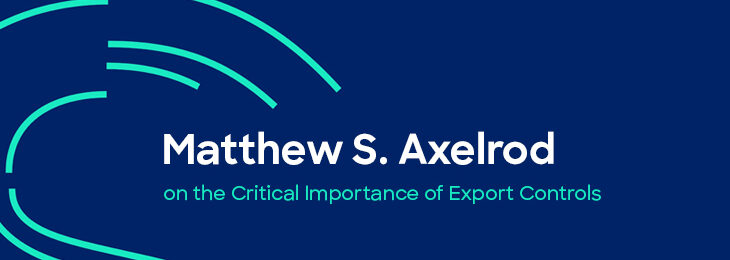
Every tech wave has a steep learning curve. In the not-too-distant past, understanding what the internet was or how to use email made one a party standout. Now it is impossible to imagine not knowing either.
Just as it was with these innovations, artificial intelligence (AI) is having its brief moment of magical novelty, and those few that can talk about it competently can command more than just a watercooler conversation: They can be a real asset to their organizations. In the anti-money laundering (AML) space, those that display literacy in the technology are an asset as well.
For the tech-curious in AML, the following quiz is designed to help assess where your AI proficiency stacks up. It is a broad test, covering vocabulary, technology and history. The questions fall into three levels of difficulty (basic, intermediate and advanced), and correct answers in each level have different point values. The total points earned over the course of the test correlate with rankings.
Wondering where you fall? Put your thinking caps on, because test time has begun. (Answers at the bottom of the test).
Basic
(Worth 1 point each)
- What is “NLP”?
- Neuro-linguistic programming
- Natural language processing
- National Library of the Philippines
- Nondeterministic limited polynomial
- What does it mean to “train a model”?
- Systems use examples to generate input/output relationships in algorithms
- Experts code direct input/output relationships into algorithms
- Models use algorithms to generate examples
- Algorithms use examples to code systems
- What is machine learning?
- The dividing line between what is and what is not AI
- An umbrella term for any approach that uses algorithms trained on data
- A process of building an algorithmic model using examples
- All of the above
- Why is training data quality so important in AI?
- Experts are rare, so AI developers rely on data
- Experts are expensive, so AI developers rely on data
- Data quality largely determines model quality
- AI systems can only train on small quantities of data at a time, so quality has to be high
- Fill in the blank: NLP is to AI as ___ is to science.
- Microscopes
- Darwin
- Dinosaurs
- Chemistry
- What is AGI?
- Artificial Greater Intelligence
- Artificial Generative Intelligence
- Artificial Guided Intelligence
- Artificial General Intelligence
- When was the term “AI” coined?
- 1956
- 1965
- 1975
- 1876
Intermediate
(Worth 2 points each)
- Do you always need large quantities of data to train AI?
- Yes
- No
- What is the difference between “supervised” and “unsupervised” learning?
- Supervised learning needs subject-matter experts, while unsupervised learning can work without subject-matter experts
- Supervised learning needs data, while unsupervised learning can work without data
- Supervised learning needs labeled data, while unsupervised learning can work without labels
- Supervised learning needs trained models, while unsupervised learning can work without trained models
- True or false: Reinforcement learning is a method that allows machines to learn a task by themselves.
- True
- False
- What is deep learning?
- A type of machine learning that is more powerful for philosophical applications
- A type of machine learning model that is loosely based on neural architecture
- Neither a nor b
- Both a and b
- What is narrow AI?
- AI applied to a very rare problem
- AI applied to a very small problem
- AI applied to a very specific problem
- AI applied to a very deep problem
- What is the “black box” problem?
- The inexplicability of human cognition
- The inexplicability of complex machine learning systems
- The inexplicability of big data sets
- The inexplicability of AI experts
- What was the name of the first computer chess-playing system to win a chess match against a reigning world champion?
- Deep Blue
- Stockfish AI
- JARVICE
- AlphaGo
Advanced
(Worth 4 points each)
- What is synthetic data?
- Digital data made for tech-only machine learning applications
- Hacked data made for malicious purposes
- Eco-friendly data made from recycled plastic
- Imitation example data made when real-life examples are limited
- Fill in the blank: In 2003, the Massachusetts Institute of Technology’s Laboratory for Computer Science (LCS) and its Artificial Intelligence Laboratory (AI Lab) merged to form ____.
- Center for Artificial Intelligence & Computing
- DeepMind
- Institute for Learning Algorithms
- Computer Science & Artificial Intelligence Laboratory
- Who wrote the Pulitzer prize-winning book on AI titled, Gödel, Escher, Bach: An Eternal Golden Band?
- Douglas Hofstadter
- Andrew Ng
- Marvin Minsky
- Raymond “Ray” Kurzweil
- Which “Sesame Street” character does NOT have an AI algorithm named after it?
- Bert
- Elmo
- Big Bird
- Cookie Monster
- What is the main reason the black box problem is more prevalent with deep-learning models than with traditional machine-learning models?
- Deep-learning models are more complex and multi-layered
- There are fewer deep learning experts
- It isn’t; the black box problem is equally prevalent with both types of models
- None of the above
- What is transfer learning?
- Taking a machine-learned model powered by CPUs and modifying it with GPUs
- Taking a machine-learned model built with one algorithm and modifying it with another algorithm
- Taking a machine-learned model trained in one domain and then continuing the training in a new target domain
- Taking a machine-learned model created by one set of engineers and modifying it with the work of another set of engineers.
What Level Are You?
- If you scored 0-14 points, you are an AI Novice: Just beginning to explore the space, you know a bit about the technology and the history but have not had time to really dig into AI.
- If you scored 15-29 points, you are a Generally Curious Journeyman: You find AI interesting and have read a few articles, maybe a book on the subject. While comfortable in conversations about the topic, you would like to learn more.
- If you scored 30-45 points, you are a Machine Learning Master: Not an AI engineer, but you really know the space—a true enthusiast, fascinated by how this industry and technology are advancing.
Answers:
1. b, 2. a, 3. d, 4. c, 5. d, 6. d, 7. a, 8. b, 9. c, 10. a, 11. b, 12. c, 13. b, 14. a, 15. d, 16. d, 17. a, 18. d, 19. a, 20. c.










